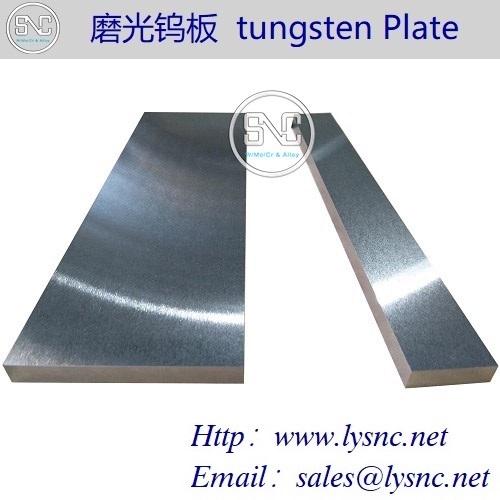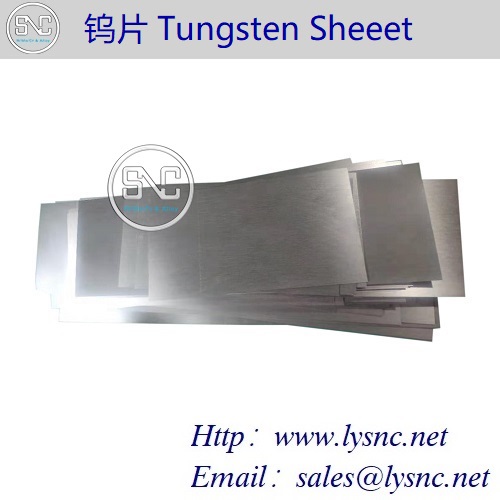High-temperature industrial raw materials
Generally have a melting point higher than 1650 ° C and have a certain amount of metal and a metal whose melting point is higher than the melting point of zirconium (1852 ° C) is called refractory metal.
Both tungsten and molybdenum are high temperature resistant metals with good thermal conductivity, electrical conductivity, low thermal expansion coefficient, high temperature strength, low vapor pressure and wear resistance. They are electronic power equipment manufacturing, metal materials processing industry, glass manufacturing industry, high temperature furnace. An important material for structural component manufacturing, aerospace and defense industry applications.
In addition to tungsten and molybdenum, other refractory metals include bismuth, antimony, zirconium, titanium, and antimony. High temperature resistant metals have a great effect on industrial development.
Tungsten
tungsten are the most refractory metals with the highest melting point. As a refractory metal, tungsten has the most important advantages of good high temperature strength, good corrosion resistance to molten alkali metals and vapors, and oxide volatilization and liquid oxides only when the temperature is above 1000 °C. However, it also has the disadvantage that the plastic-brittle transition temperature is high and it is difficult to plastically process at room temperature. The refractory metal represented by tungsten has been widely used in metallurgy, chemical industry, electronics, light source, machinery industry and other departments.
Molybdenum
Molybdenum are relatively stable in chemical properties. Molybdenum is stable in air or water at room temperature or at relatively low temperatures. Molybdenum is heated in air, the color begins to turn from white (color) to dark gray; when the temperature rises to 520 °C, molybdenum begins to be slowly oxidized to form yellow molybdenum trioxide (MoO3, which turns white after the temperature drops to normal temperature); Above 600 ° C, molybdenum is rapidly oxidized to MoO3. Molybdenum is heated to 700-800 ° C in water vapor to form MoO2, which is further heated, and molybdenum dioxide is continuously oxidized to molybdenum trioxide. Molybdenum can spontaneously ignite in pure oxygen to form molybdenum trioxide.
Tantalum
It has excellent chemical properties and is highly resistant to corrosion. It does not react with hydrochloric acid, concentrated nitric acid and "Aqua regia" under both cold and hot conditions. However, bismuth can be corroded in hot concentrated sulfuric acid. Below 150 °C, bismuth will not be corroded by concentrated sulfuric acid. Only above this temperature will it react. In 175 degree concentrated sulfuric acid for 1 year, the thickness is corroded. For 0.0004 mm, the crucible was immersed in 200 ° C sulfuric acid for one year, and the surface layer was only damaged by 0.006 mm. At 250 degrees, the corrosion rate increases, and the thickness of the corrosion is 0.116 mm per year. At 300 degrees, the corrosion rate is accelerated. After 1 year of immersion, the surface is corroded by 1.368 mm. The corrosion rate of fuming sulfuric acid (containing 15% SO3) is more serious than that of concentrated sulfuric acid. It is immersed in the solution at 130 degrees for 1 year, and the surface is corroded to a thickness of 15.6 mm. Helium is also corroded by phosphoric acid at high temperatures, but the reaction generally occurs above 150 degrees. In 250% of 85% phosphoric acid, it is immersed for 1 year, and the surface is corroded by 20 mm. In addition, helium is hydrofluoric acid and nitric acid. The mixed acid dissolves quickly and can also be dissolved in hydrofluoric acid. However, cockroaches are more afraid of strong alkali. In a 110% 40% caustic soda solution, strontium is quickly dissolved. In the same concentration of potassium hydroxide solution, it will dissolve rapidly as long as 100 degrees. In addition to the above, general inorganic salts generally do not corrode ruthenium below 150 degrees. Experiments have shown that bismuth does not work on alkaline solution, chlorine gas, bromine water, dilute sulfuric acid and many other agents at room temperature, and only reacts under the action of hydrofluoric acid and hot concentrated sulfuric acid. Such a situation is relatively rare in metals.
However, at high temperatures, the oxide film on the surface of the crucible is destroyed, so it can react with various substances, and it can react with fluorine at normal temperature. At 150 ° C, hydrazine is inert to chlorobromoiodide. At 250 ° C, hydrazine is still resistant to dry chlorine. It is heated to 400 ° C in water containing chlorine and still keeps bright at 500 ° C. It begins to corrode, reacts with bromine at temperatures above 300 °C, and is inert to iodine vapors before the temperature reaches red heat. Hydrogen chloride reacts with hydrazine at 410 ° C to produce pentachloride, and hydrogen bromide reacts with hydrazine at 375 ° C. When heated to a temperature of 200 ° C or lower, S can react with Ta, and carbon and hydrocarbons act at 800-1100 ° C with hydrazine.
Niobium
Rhodium is an off-white metal with a melting point of 2468 ° C, a boiling point of 4742 ° C and a density of 8.57 g / cm 3 . Niobium is a lustrous gray metal with paramagnetic properties that exhibit superconductor properties at low temperatures. At standard atmospheric pressure, its critical temperature is 9.2K, the highest of all elemental superconductors. Its magnetic penetration depth is also the highest of all elements. Tantalum is one of three elemental type II superconductors, the other two being vanadium and niobium. The purity of the base metal greatly affects its superconducting properties.
The capture cross section for thermal neutrons is very low, so it is quite useful in the nuclear industry. At room temperature, 鈮 is stable in air. It is not completely oxidized when it is red hot in oxygen. It is directly combined with sulfur, nitrogen and carbon at high temperature, and can form alloys with titanium, zirconium, hafnium and tungsten. Does not interact with inorganic acids or bases, is not soluble in aqua regia, but soluble in hydrofluoric acid. The oxidation state of ruthenium is -1, + 2, +3, +4 and +5, with the most stable compound at +5.
Base metals are extremely stable in air at room temperature and do not interact with air. Although it has a higher melting point in the elemental state (2,468 ° C), its density is lower than other refractory metals. It also resists various types of erosion and forms a dielectric oxide layer.
The electrical conductivity of germanium is lower than the zirconium element located to the left. Its atomic size is almost identical to the atomic element of the yttrium below it, which is caused by the lanthanide contraction effect. This makes the chemical properties of the ruthenium very similar to 鉭. Although its corrosion resistance is not as high as it is, it is cheaper and more common, so it is often used instead of helium in the case of lower requirements, such as chemical plant tank coating materials.
zirconium
Zirconium, atomic number 40, atomic weight 91.224, is a silver-gray metal, looks like steel, shiny, melting point 1852 ° C, boiling point 4377 ° C, density 6.49 g / cm 3 . Zirconium readily absorbs hydrogen, nitrogen and oxygen; zirconium has a strong affinity for oxygen, and its solubility in zirconium at 1000 °C can significantly increase its volume. The surface of zirconium is easy to form an oxide film with a luster, so the appearance is similar to steel. It is corrosion resistant but soluble in hydrofluoric acid and aqua regia. At high temperatures, it reacts with non-metallic elements and many metal elements to form a solid solution. Zirconium has good plasticity and is easy to process into sheets and wires. Zirconium can absorb a large amount of gases such as oxygen, hydrogen, and nitrogen when heated, and can be used as a hydrogen storage material. Zirconium has better corrosion resistance than titanium and is close to tantalum and niobium. Zirconium and strontium are two metals that are chemically similar and symbiotic together and contain radioactive materials.
Hafnium
chemical properties of zirconium and hafnium are very similar, with good corrosion resistance, non-erodible general acid-base aqueous solution; soluble in hydrofluoric acid to form the difluoro-inclusion complex. At high temperatures, helium can also be directly combined with gases such as oxygen and nitrogen to form oxides and nitrides.
鉿 is often +4 valence in the compound. The main compound is cerium oxide HfO2. There are three different variants of cerium oxide: cerium oxide obtained by continuously calcining cerium sulfate and oxychloride is a monoclinic variant; cerium oxide obtained by heating cerium hydroxide at about 400 ° C is a tetragonal variant; Calcination above 1000 ° C gives a cubic variant. Another compound is ruthenium tetrachloride, which is a raw material for the preparation of metal ruthenium, which can be obtained by reacting chlorine gas with a mixture of ruthenium oxide and carbon. The ruthenium tetrachloride is contacted with water and immediately hydrolyzed into a very stable HfO(4H2O)2+ ion. HfO2+ ions are present in many compounds of ruthenium, and acicular hydrated bismuth oxychloride HfOCl2•8H2O crystals can be crystallized in hydrochloric acid-acidified ruthenium tetrachloride solution.
Titanium
Titanium has a metallic luster and is malleable. The density is 4.5 g/cm 3 . Melting point 1660 ± 10 ° C. The boiling point is 3287 ° C. The valence price is +2, +3 and +4. The ionization energy is 6.82 eV. The main characteristics of titanium are low density, high mechanical strength and easy processing. The plasticity of titanium depends mainly on purity. The purer the titanium, the greater the plasticity. It has good corrosion resistance and is not affected by the atmosphere and sea water. At normal temperature, it will not be corroded by hydrochloric acid below 7%, sulfuric acid below 5%, nitric acid, aqua regia or dilute alkali solution; only hydrofluoric acid, concentrated hydrochloric acid, concentrated sulfuric acid, etc. can act on it.
















